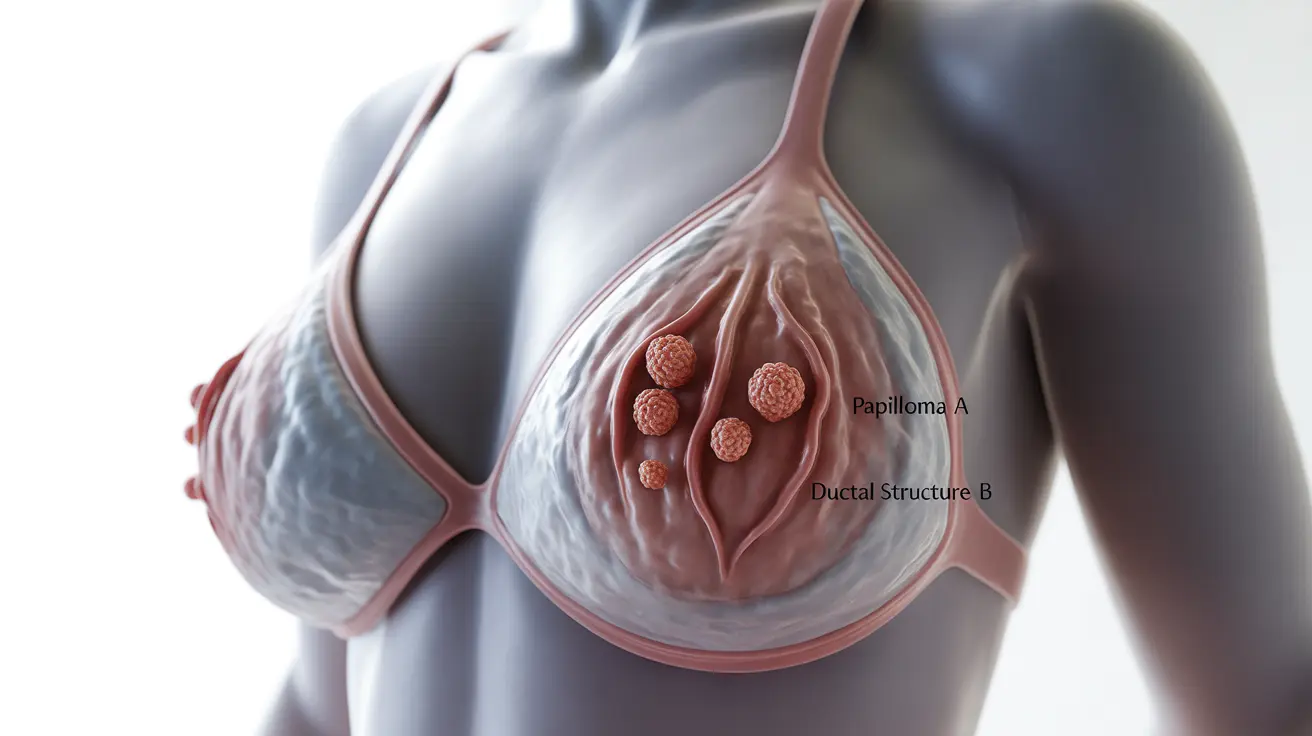Intraductal papilloma is a benign (non-cancerous) breast condition that develops within the milk ducts of the breast. While these small growths can cause concern, especially when discovered during breast screening, understanding their nature and available treatment options can help alleviate anxiety and ensure proper medical care.
What is an Intraductal Papilloma?
An intraductal papilloma is a small, wart-like growth that forms within the breast's milk duct system. These growths typically range in size from 1-2 centimeters and can occur as single lesions or multiple growths (known as papillomatosis). While they're generally harmless, they can cause noticeable symptoms that warrant medical attention.
Common Symptoms and Signs
Recognizing the symptoms of intraductal papilloma is crucial for early detection and treatment. The most common signs include:
- Nipple discharge (clear or bloody)
- A small, painless lump near the nipple
- Breast tenderness in the affected area
- Changes in the appearance of the nipple
- Swelling or pain in the breast tissue
Diagnosis Methods
Healthcare providers use several diagnostic tools to identify and confirm the presence of intraductal papilloma:
Physical Examination
Your doctor will perform a thorough breast examination to check for any lumps, discharge, or other abnormalities.
Imaging Tests
Common imaging procedures include:
- Mammogram
- Breast ultrasound
- Breast MRI (in specific cases)
Biopsy
A tissue sample may be taken to confirm the diagnosis and rule out other conditions, particularly when differentiating from papillary breast cancer.
Treatment Approaches
Treatment options for intraductal papilloma vary depending on factors such as size, symptoms, and individual patient circumstances:
Surgical Options
- Excisional biopsy
- Microdochectomy (removal of the affected duct)
- Vacuum-assisted excision
Monitoring
In some cases, especially with small, asymptomatic papillomas, your doctor might recommend regular monitoring rather than immediate surgical intervention.
Risk Factors and Prevention
While you can't completely prevent intraductal papillomas, understanding risk factors and maintaining regular screening can help with early detection:
- Age (most common in women aged 30-50)
- Hormonal fluctuations
- Family history of breast conditions
- Regular breast self-exams
- Routine mammograms as recommended by your healthcare provider
Frequently Asked Questions
What are the symptoms of intraductal papilloma, and how is it diagnosed?
The main symptoms include nipple discharge (clear or bloody), small lumps near the nipple, and breast tenderness. Diagnosis typically involves physical examination, imaging tests (mammogram, ultrasound), and sometimes a biopsy for confirmation.
Does having an intraductal papilloma increase my risk of developing breast cancer?
While intraductal papillomas are generally benign, having multiple papillomas (papillomatosis) may slightly increase breast cancer risk. Regular monitoring and follow-up with your healthcare provider is important.
What are the treatment options for intraductal papilloma, and is surgery always necessary?
Treatment options include surgical removal through excisional biopsy or microdochectomy. Surgery isn't always necessary for small, asymptomatic papillomas, and some cases may be managed through regular monitoring.
How do I differentiate between intraductal papilloma and papillary breast cancer?
Only a healthcare provider can make this distinction through proper diagnostic testing, including imaging and biopsy. Papillary breast cancer typically appears differently on imaging and has distinct cellular characteristics when examined under a microscope.
Can intraductal papillomas be prevented, and what role does regular screening play in their detection?
While prevention isn't possible, regular breast screening, including self-exams and mammograms, helps detect papillomas early. Maintaining routine medical check-ups and promptly reporting any breast changes to your healthcare provider are essential for early detection and treatment.




